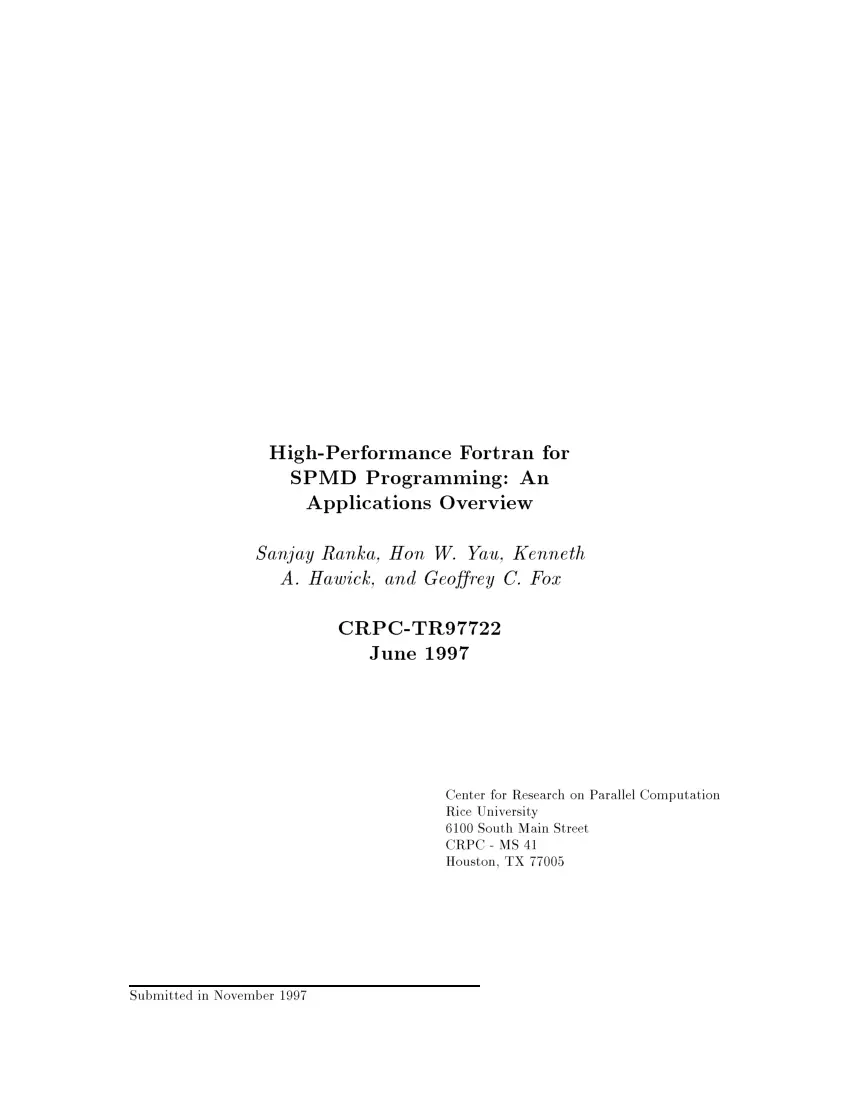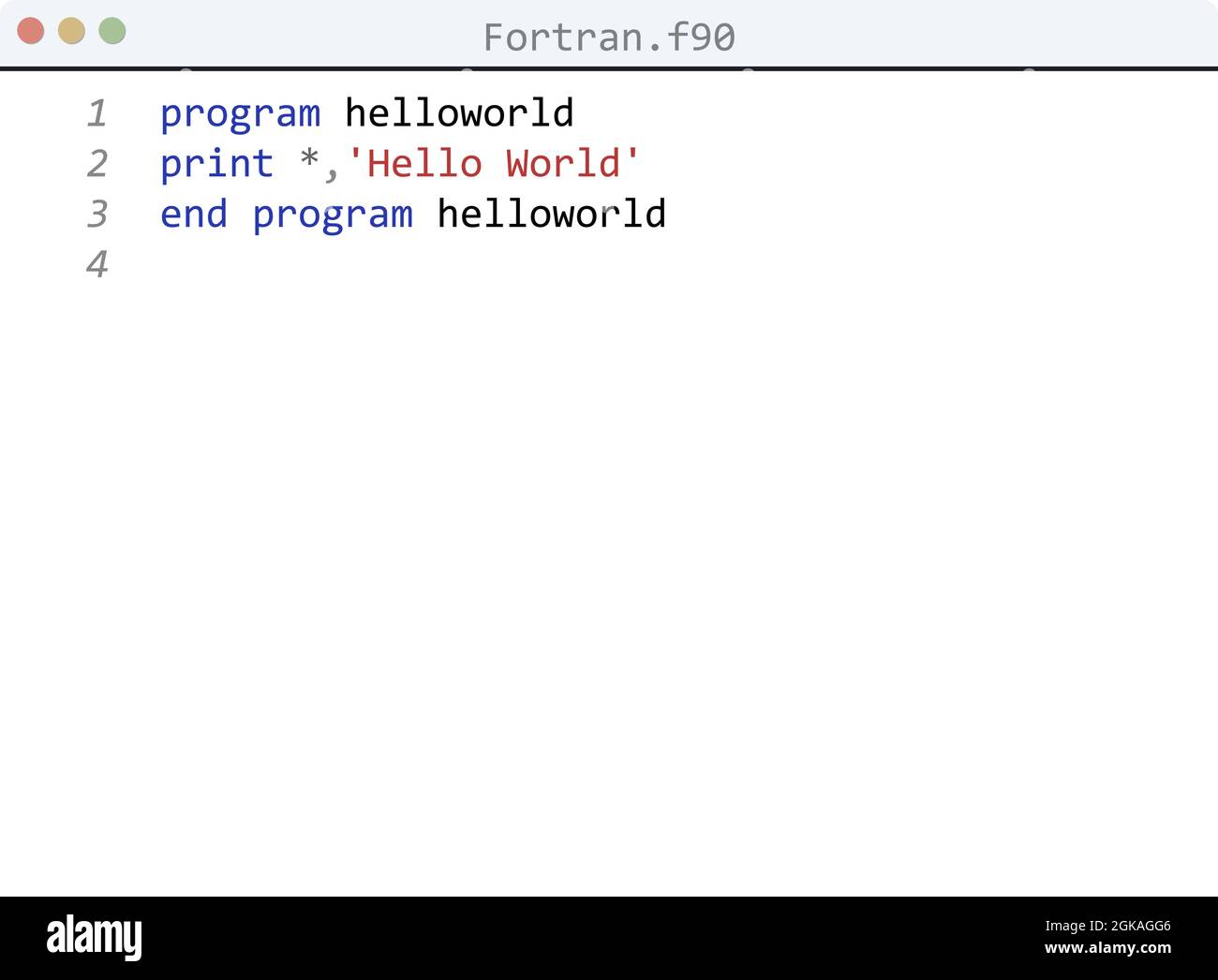Pioneering Numerical Computing:

- Fortran was developed in the 1950s at IBM as one of the earliest high-level programming languages.
- It quickly became the dominant language for numerical computing, driving advancements in scientific research and engineering.
Scientific Breakthroughs:

- Fortran enabled scientists to solve complex mathematical models and simulate real-world phenomena, leading to breakthroughs in:
- Nuclear physics
- Fluid dynamics
- Particle physics
- Meteorology
Parallel Computing and Supercomputers:

- Fortran’s support for parallel programming and its adoption by supercomputer manufacturers facilitated the development of massive parallel systems.
- These supercomputers accelerated scientific computing and expanded into various fields, such as:
- Weather forecasting
- Climate modeling
- Medical imaging
Engineering Applications:
- Fortran’s efficiency and ability to handle large datasets made it invaluable for engineering applications:
- Structural analysis
- Finite element modeling
- Computational fluid dynamics
- Design optimization
Industrial Impact:
- Fortran’s widespread use in engineering and scientific industries led to:
- Improved product designs
- Reduced development costs
- Faster innovation cycles
Legacy and Continuing Influence:
- Fortran remains an essential language for high-performance computing, particularly in scientific and technical domains.
- Modern Fortran standards support parallel programming, object-oriented programming, and other advanced features.
- It continues to drive innovation in scientific computing and artificial intelligence.
Key Contributions to High-performance Computing:
- Efficient and Concise Syntax: Fortran’s syntax allows for efficient coding and minimizes computation time.
- Data Parallelism and Vectorization: Fortran provides built-in support for data parallelism, enabling efficient use of vector instructions on modern processors.
- Portability: Fortran programs can be compiled and run on various platforms, simplifying collaboration and knowledge transfer.
- Proven Track Record: Fortran’s decades-long usage and constant improvement have made it a reliable choice for demanding high-performance computing applications.## How Fortran Shaped The World Of High-performance Computing
Executive Summary
Fortran, a high-level programming language designed for scientific and engineering applications, has played a pivotal role in shaping the landscape of high-performance computing (HPC). Since its inception in the 1950s, Fortran has been instrumental in enabling groundbreaking advancements in various scientific disciplines and technological fields. The language’s versatility, efficiency, and scalability have made it a preferred choice for complex computational tasks that demand high levels of precision and speed.
Introduction
Fortran, an acronym for “Formula Translation,” was developed by a team of engineers at IBM in the mid-1950s. Its primary objective was to create a programming language specifically tailored for scientific and engineering computations, addressing the limitations of existing languages like assembly code. Fortran’s concise syntax, optimized for representing mathematical equations and formulas, quickly gained traction within the scientific community. Over the years, Fortran has undergone numerous revisions and enhancements, leading to the development of modern variants such as Fortran 90, Fortran 95, Fortran 2024, and Fortran 2024.
FAQs
-
What is Fortran used for?
Fortran is primarily used for developing scientific and engineering applications that require high levels of computational performance. These applications often involve complex mathematical calculations, simulations, data analysis, and modeling. Fortran’s efficiency and precision make it ideal for tasks that demand accurate and reliable results. -
Why is Fortran still popular?
Fortran remains popular due to its exceptional performance, especially in HPC environments. The language’s optimized syntax allows for efficient code generation, minimizing computational overhead and maximizing performance. Additionally, Fortran’s extensive library support and compatibility with various hardware architectures contribute to its continued popularity. -
What are the advantages of using Fortran?
-
High performance: Fortran’s optimized code generation and efficient memory management enable the development of computationally intensive applications that can leverage the full capabilities of modern HPC systems.
-
Precision: Fortran’s strict data typing and support for complex data structures ensure accurate and reliable computations, making it suitable for applications requiring high levels of precision.
-
Scalability: Fortran programs can be easily scaled to run on large-scale parallel computing systems, allowing for the efficient execution of complex tasks on distributed architectures.
-
Extensive library support: Fortran has a vast collection of libraries optimized for scientific and engineering applications, providing a wide range of functionality and reducing development time.
Subtopics
Scientific Computing:
- Numerical simulations: Fortran is widely used in scientific computing, enabling the simulation of complex physical phenomena, such as fluid dynamics, weather forecasting, and molecular dynamics.
- Finite element analysis: The language is employed in finite element analysis software, facilitating the modeling and simulation of complex structures under various loading conditions.
- Computational chemistry: Fortran is extensively used in computational chemistry, enabling the modeling of molecular structures, chemical reactions, and electronic properties.
Engineering Applications:
- Computational fluid dynamics (CFD): Fortran is a popular choice for CFD applications, simulating fluid flow and heat transfer in complex geometries.
- Structural analysis: The language is utilized in structural analysis software, enabling the simulation and prediction of structural behavior under various loading scenarios.
- Finite element modeling: Fortran is employed in finite element modeling software, facilitating the analysis and design of complex mechanical systems.
High-Performance Computing (HPC):
- Parallel programming: Fortran supports parallel programming models, enabling the efficient distribution of computational tasks across multiple processors or nodes in HPC environments.
- Vectorization: The language provides features for vectorization, allowing for the optimization of code for vector processors and SIMD (Single Instruction Multiple Data) architectures.
- Distributed memory programming: Fortran supports distributed memory programming, enabling the development of applications that can be executed on distributed memory systems.
Data Science and Artificial Intelligence (AI):
- Machine learning: Fortran is increasingly used in machine learning applications, providing high-performance implementations of algorithms for data analysis, classification, and prediction.
- Deep learning: The language is employed in deep learning frameworks, enabling the development of complex neural networks and deep learning models for various AI tasks.
- Big data analytics: Fortran is utilized in big data analytics platforms, supporting the processing and analysis of large-scale datasets.
Conclusion
Fortran’s legacy and impact on the world of HPC are undeniable. Its combination of efficiency, precision, and scalability has made it a cornerstone of scientific and engineering computing for over six decades. As HPC continues to advance, Fortran will undoubtedly remain a vital tool for researchers, engineers, and scientists seeking to push the boundaries of computational science and technology.
Keyword Tags
- Fortran
- High-performance computing
- Scientific computing
- Engineering applications
- Parallel programming

